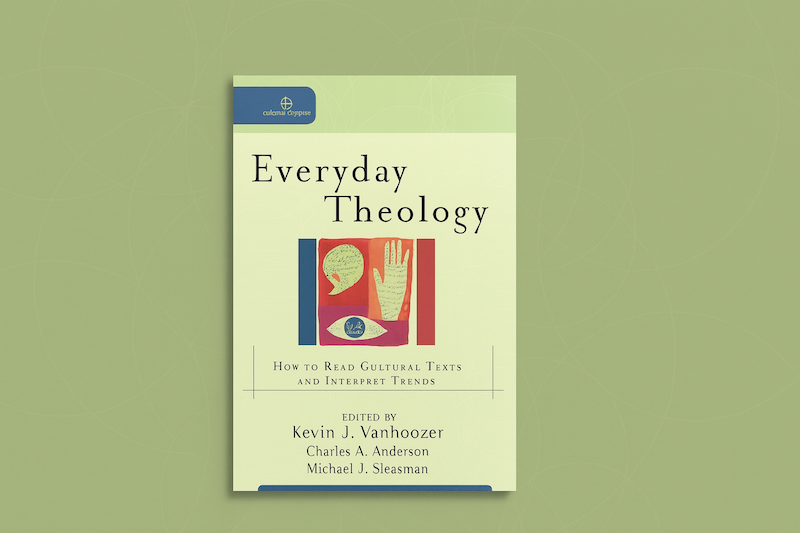
Praying the pattern presented in the Lord’s Prayer is God’s idea, instruction, and desire for you, maintains Dennis Fuqua. Released in 2012 by Deep River Books, in Living Prayer (The Lord’s Prayer Alive in You), Fuqua calls us to pray this prayer wholeheartedly, with all that we are, as a way of journeying with God, not only in conversation but in relationship. Quoting J.I. Packer, Fuqua explains that he wrote this book because “we never get beyond this prayer” (Fuqua 2012, 14). This book is a journey through the Lord’s Prayer, presenting it as a way of being “invited into real, heart-to-heart communication with the living and loving God” (Fuqua 2012, 12).
An Overview of Living Prayer (The Lord’s Prayer Alive in You)
At just over 200 pages, Living Prayer (The Lord’s Prayer Alive in You) by Dennis Fuqua is a practical and devotional guide that invites readers into a deeper understanding of the Lord’s Prayer. Drawing from his personal experience and years of reflection, Fuqua explores the priorities and petitions found within the Lord’s Prayer. His purpose is to encourage readers to learn, meditate on, and internalize the prayer, not as a rigid formula but as a dynamic pattern for relational prayer. The book weaves together Fuqua’s own journey, theological insights, and accessible practices for making the prayer one’s own. Written in a conversational and approachable style, the book serves as an excellent introduction to the theological depth and biblical context of the Lord’s Prayer. Fuqua’s use of footnotes helps readers engage more deeply with the scriptures by pointing to key verses and expanding on their meaning. His passion for this prayer began decades ago when he asked God to teach him how to pray. The answer came through an impression that led him to sustained meditation on Matthew’s account of the Lord’s Prayer, which, he explains, differs significantly from Luke’s version. Fuqua argues—persuasively and in agreement with this reviewer—that these are not two accounts of the same event but two distinct teachings in different settings: “In Matthew, Jesus initiated the topic while He was teaching. In Luke, the disciples initiated the topic after watching Jesus pray…” (Fuqua 2012, 19). Ultimately, Fuqua seeks to reshape how we prioritize prayer by reintroducing the revolutionary priorities and petitions of the Lord’s Prayer in a way that invites transformation.
Looking Inside Living Prayer (The Lord’s Prayer Alive in You)
Living Prayer: The Lord’s Prayer Alive in You by Dennis Fuqua is divided into three parts: The Way In (Part One), Understanding the Prayer (Part Two), and Prayers from the Lord’s Prayer (Part Three).
Part One begins with Fuqua’s personal journey with prayer in Chapter One, a call to open our eyes in prayer in Chapter Two, and an invitation to experience the essence of the Lord’s Prayer in Chapter Three. These chapters lay the foundation for understanding and internalizing the prayer, not just as something to recite but as a life-giving pattern of communication with God.
In Part Two, Fuqua breaks down the Lord’s Prayer into eight key lines, devoting a chapter to each: “Our Father in Heaven” (Chapter Four), “Let Your Name Be Holy” (Chapter Five), “Let Your Kingdom Come” (Chapter Six), “Let Your Will Be Done” (Chapter Seven), “Give Us Today Our Daily Bread” (Chapter Eight), “Forgive Us Our Debts” (Chapter Nine), “Lead Us Not Into Temptation” (Chapter Ten), and “Deliver Us from the Evil One” (Chapter Eleven). For the most part, Fuqua and I are in full agreement regarding how to divide and interpret the petitions within the Lord’s Prayer. However, in my curriculum, I combine “Lead us not into temptation” and “Deliver us from the evil one” as a single movement. Fuqua acknowledges their connection as well, noting that they form a type of Hebrew parallelism: “The phrase deliver us from the evil one is connected to the previous one (lead us not into temptation) by the contrast word but” (Fuqua 2012, 131). Part Two concludes with encouragement to make this prayer one’s own, providing a helpful transition into the final section.
Part Three explores how to develop personal prayers from the framework of the Lord’s Prayer. It includes an afterword, a personal reflection titled “The Debt of Love I Owe,” a practical invitation in “Now It’s Your Turn,” as well as brief sections about the author and the Living Prayer Seminar that Fuqua facilitates.
About Author Dennis Fuqua
Dennis Fuqua served as the Director of International Renewal Ministries, an organization that describes itself as “prayer-focused.” At the time of this book’s publication, International Renewal Ministries has focused on hosting more than 2,000 Prayer Summits across 40 states and 30 nations. Since asking God to teach him how to pray, Fuqua’s journey has led him to write numerous books on prayer, coach many followers of Jesus in developing a prayer life, serve as an adjunct seminary professor on prayer, and participate as a member of the National Prayer Committee. Prayer has become Fuqua’s “thing,” and it shows throughout this book. His work comes highly recommended by leaders such as Dave Butts, then chairman of the National Prayer Committee and president of Harvest Prayer Ministries; Phil Miglioratti, president of the National Pastors’ Prayer Network; Dr. Dan R. Crawford, professor of Evangelism and Missions at Southwestern Baptist Theological Seminary; and Kevin Palau, president of the Luis Palau Association. Fuqua shares, “To this day I suckle at the Lord’s Prayer like a child, and as an old man eat and drink from it and never get my fill. It is the very best prayer… It is surely evident that a master composed it and taught it. Everybody tortures and abuses it; few people take comfort and joy in its proper use.” That passion and reverence for the prayer are evident throughout his writing.
Why I Read Living Prayer (The Lord’s Prayer Alive in You)
As I continue reading books on the Lord’s Prayer for my studies at Kairos University, I aim to engage not only with those that are theologically rich or historically contextualized but also with those that closely align with the kind of curriculum I am developing, so I can wrestle with both their strengths and shortcomings. While I would have appreciated more church history in Fuqua’s book, he comes remarkably close to my own vision for researching the Lord’s Prayer in its historical, theological, and practical dimensions. This book certainly excels in the practical aspect, offering readers not only a contagious understanding and appreciation for the prayer but also creative, tangible ways to engage with it in various contexts and for various reasons, without undermining its core petitions.
A Good and Easy Read
Each chapter ends with a few questions for reflection. While these could be used in a group setting, I found that Fuqua’s writing style lends itself more to personal study and journaling—and that is a really good way to approach the Lord’s Prayer. As noted earlier, this is a good and accessible read, one that just about anyone can engage with. It will deepen your appreciation for the Lord’s Prayer and move you to notice and understand the many scriptural references Jesus weaves into it. That said, the book could have benefited from a deeper theological framework and more thorough editing for balanced thought. In my opinion, the weakest section was the chapter on “Deliver Us,” which might have been more effective if combined with “Lead Us Not into Temptation.” I also found the sample prayers for creatively praying through the Lord’s Prayer to be a mixed bag—there were too many, and a few took more liberties than I was comfortable with. Still, the invitation to create and personalize the prayer is valuable. We must not merely recite this prayer; we must own it. And Fuqua offers many thoughtful ways to reflect on it and use it as a means of spiritual formation and deliverance.
Without a doubt, the strongest chapter was on forgiveness for me. It is at the heart of this prayer. Fuqua looks at how “Forgiveness has two aspects: receiving it and granting it. Receiving forgiveness is God’s plan for how we deal with our own sin. Granting forgiveness is His plan for how we deal with those who sin against us” (Fuqua 2012, 102). Fuqua reminds us that perhaps we are no more like him than when we are forgiving. It’s clear this is a central part of good and effective prayer, because “This is the one topic in the Lord’s Prayer that Jesus comes back to review and reinforce (in Matthew 6:14-15) immediately after teaching the prayer” (Fuqua 2012, 110). Without a doubt, “Jesus knew that one of the most powerful assets we can have as we pray is a clean heart before God” (Fuqua 2012, 113). This section truly stood out—I took more notes and highlighted more lines here than in any other chapter.
Overall, I loved reading this book—not because it introduced completely new information, but because Dennis Fuqua writes in a way that is both reflective and empowering. As he puts it, “Part of this prayer’s purpose is to produce change in us. As we continually pray these requests, we’re transformed” (Fuqua 2012, 37). But as he also wisely notes, “we need a basic understanding of what each line means” to pray it effectively (Fuqua 2012, 41). Fuqua succeeds in helping readers grasp the meaning behind each petition, and that goal aligns closely with what is driving my own research. I plan to return to his thoughts on temptation versus trial—I’m not sure I’ll land in the same place. While his explanation looks good on paper, it sometimes felt like splitting hairs or threading a theological needle a bit too finely.
A Recommended Read
Living Prayer: The Lord’s Prayer Alive in You is a relevant and accessible resource for anyone desiring to deepen their practice and understanding of prayer, particularly through the framework of the Lord’s Prayer. Fuqua’s passion, pastoral tone, and practical guidance make this a valuable book for personal spiritual formation, devotional reading, or as a supplement in prayer-focused courses and retreats. While it may not satisfy those looking for extensive theological or historical analysis, it excels in helping readers engage the Lord’s Prayer in meaningful, transformative ways. I recommend this book primarily for individual use (especially for those who want to pray more intentionally and reflectively), but it could also serve as a helpful springboard for small group discussions if paired with a more theologically robust companion text. For anyone developing a curriculum, like myself, it offers insight into how the Lord’s Prayer can be lived, not just learned or recited. Fuqua’s work encourages us not only to say the Lord’s Prayer but to allow it to shape our hearts, priorities, and relationship with God.



